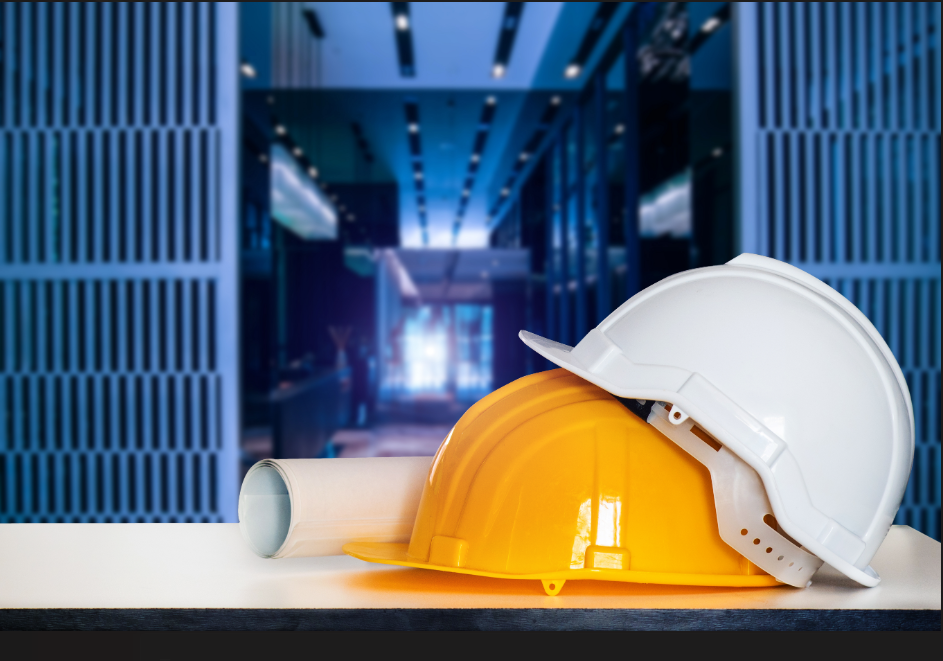
Without data centers, there would be no internet, no mobile apps, and no connected objects. Data centers are the heart and circulatory system of our modern digital society, and there is huge demand on this digital infrastructure. For this reason, Data4 has doubled the number of markets in which it operates, from three in 2016 to six in 2023.
Data center development is a complex and strategic undertaking that requires a meticulous approach to data center design, architecture, engineering, and technological integration. This is particularly important given that data centers currently consume around 3% of all energy produced worldwide. On issues ranging from energy efficiency to implementation of operations and strategies, let’s take a closer look at how Data4 is shaping the future of data centers by balancing the needs of performance, security, and sustainability.
Strategic planning in the data center construction process
Building a data center is a process that starts long before the first shovel enters the dirt. The initial planning phase involves a detailed evaluation of the data processing and storage needs. This meticulous analysis allows the developers to design data center architecture that will respond not only to current needs, but which will also be capable of future expansion to meet needs down the line.
The choice of location is another key aspect of strategic planning. Data4 assesses several criteria to find the right site, including the proximity to network infrastructure, the availability of energy resources, particularly renewable energy, and areas offering a low risk of natural disasters. For these reasons, the Ile-de-France region, for example, is a strategic location thanks to its central positioning in France and its access to network infrastructure and to diversified energy sources, facilitating responsible energy consumption.
Data center design and architecture
Data centers must incorporate key considerations such as redundancy, modularity, and energy efficiency. Redundancy is ensured at several different levels, from electrical power systems to data networks, guaranteeing maximum availability and reliability of data hosting services. Meanwhile, modularity makes it possible to adjust resources as needs evolve without interfering with existing operations.
At the same time, security is at the heart of the architectural design of data centers, with controlled and monitored access, as well as special protocols, including biometric access control, 24/7 video surveillance, and anti-intrusion systems.
Technical and technological infrastructure
Cooling is one of the most critical aspects of data center management given the amount of heat generated by IT equipment. Choosing the right cooling solutions, from a technical standpoint but also an environmental standpoint, is a key concern.
While traditional air conditioning can still be found in data centers, there are other approaches available. This is notably the case for a type of air cooling that optimises energy consumption using smart architectural design that promotes efficient air circulation and reduces the need for mechanical cooling. There’s also liquid cooling, with liquid being better at conducting heat than air. As such, liquid cooling can more effectively handle the growing density of equipment found in data centers as they host applications and racks with high computing power capacity.
To keep the building and its operations running, the data center must have a reliable electrical power source. Data center builders incorporate backup power systems and uninterruptible power supplies (UPS) to prevent all service interruptions, even when the main electrical grid fails. Data4 also focusses on the efficiency of these systems, adopting technologies that minimise energy loss while favouring the use of renewable energy.
Sustainability and the environmental impact of data center construction
In 2030, the digital sector could consume 13% of global electricity. That’s according to a study on the spatial and energy impacts of data centers on their communities (ADEME report, 2019). Within a data center, two thirds of electricity consumed is used to operate equipment, while the remaining third is used to eliminate heat given off by that equipment.
As such, sustainability and data center construction go hand in hand. With that in mind, Data4 is committed to designing and building the most sustainable digital infrastructure possible, incorporating environmentally responsible practices at every stage in the construction and management of its data centers.
To adopt a sustainable approach, Data4 has already implemented concrete solutions:
- Opting for free cooling and free chilling technologies that use fresh outdoor air where possible to cool computer rooms.
- Optimising equipment performance by revamping the electrical architecture.
- Installing solar panels on some of our campuses.
- Using refrigerants with a lower emission factor.
- Using concrete with a lower environmental impact for the foundations of a new data center.
- Reducing the environmental impact of our future data centers by extending battery life and using lithium batteries to replace old lead batteries.
- Recycling and processing waste from building renovations, as was the case with the Marcoussis data center campus, where:
- 6% of waste was reused.
- 47% of waste was recycled.
- 47% of waste was repurposed to produce energy.
- 0% of waste from the D4 building renovation (Marcoussis campus, near Paris) went to landfills.
Accounting for standards and regulations during data center construction
Compliance with standards and regulations is a fundamental aspect of data center construction and operations. Compliance guarantees not only the security and reliability of data center facilities, but also their sustainability and environmental responsibility.
To earn BREEAM certification, sustainability goes far beyond just energy efficiency. It also includes nine other mandatory criteria: materials, waste, land use, pollution, management, health, well-being, transport, and water. BREEAM certification is now an integral part of every stage of our data center design process. It’s an ongoing process, and with each new data center, we achieve better results and increase our level of certification.
Data4’s data center construction and operations embody remarkable synergies between technological innovation, environmental commitment, and regulatory compliance. In light of the challenges posed by the exponential growth of digital data and the need for energy conservation, the practices adopted by Data4 pave the way for broader considerations about the future of digital infrastructure. Such practices push the industry to reconsider its methods in pursuit of both technological effectiveness and environmental sustainability, with a view to building a sustainable digital future for all.

